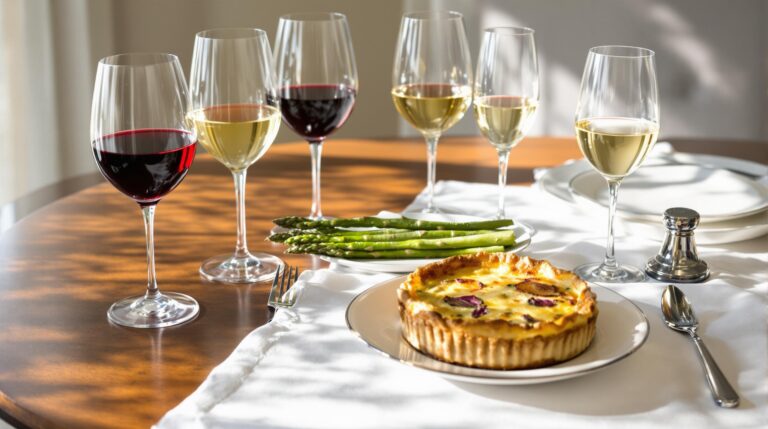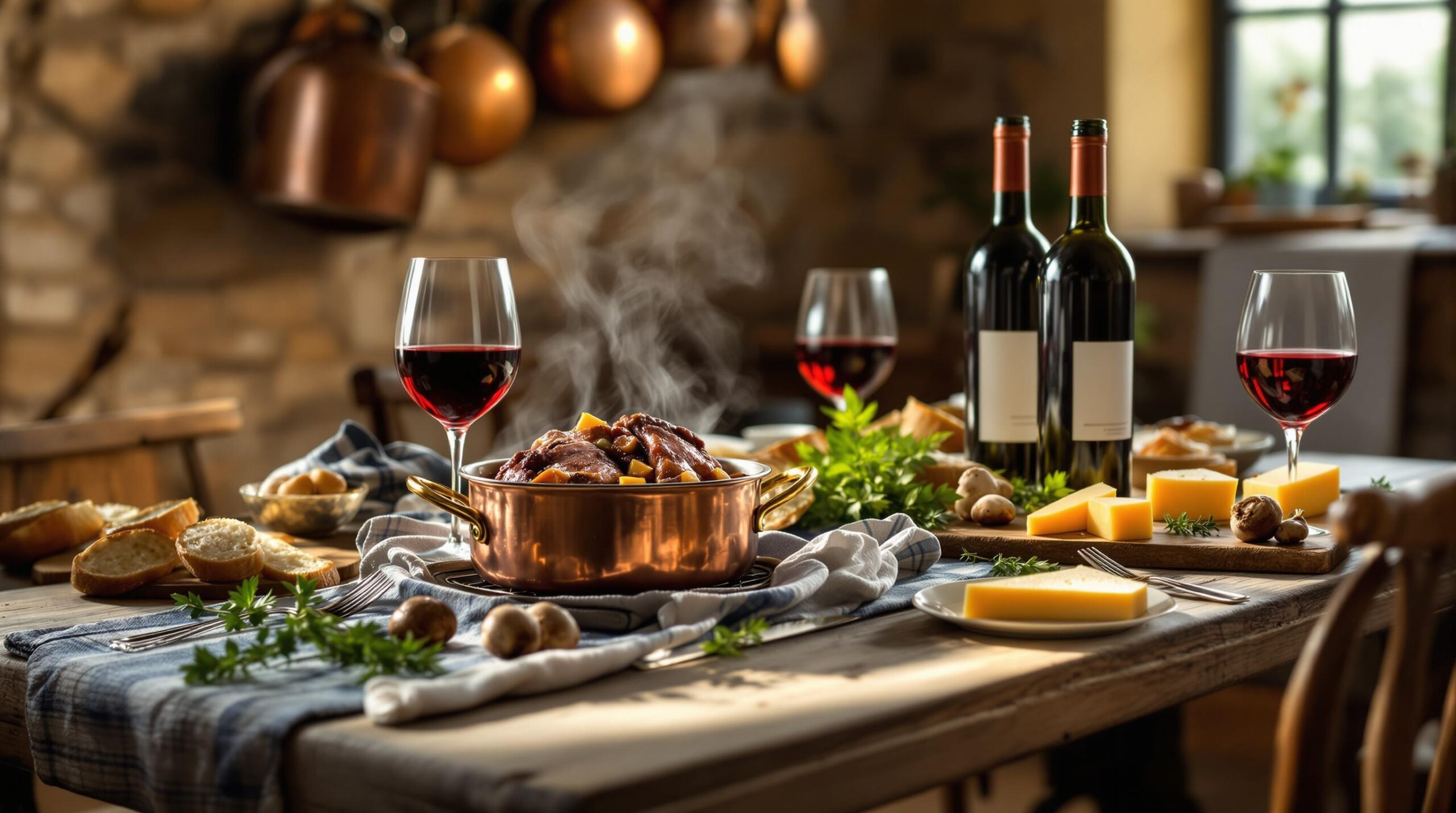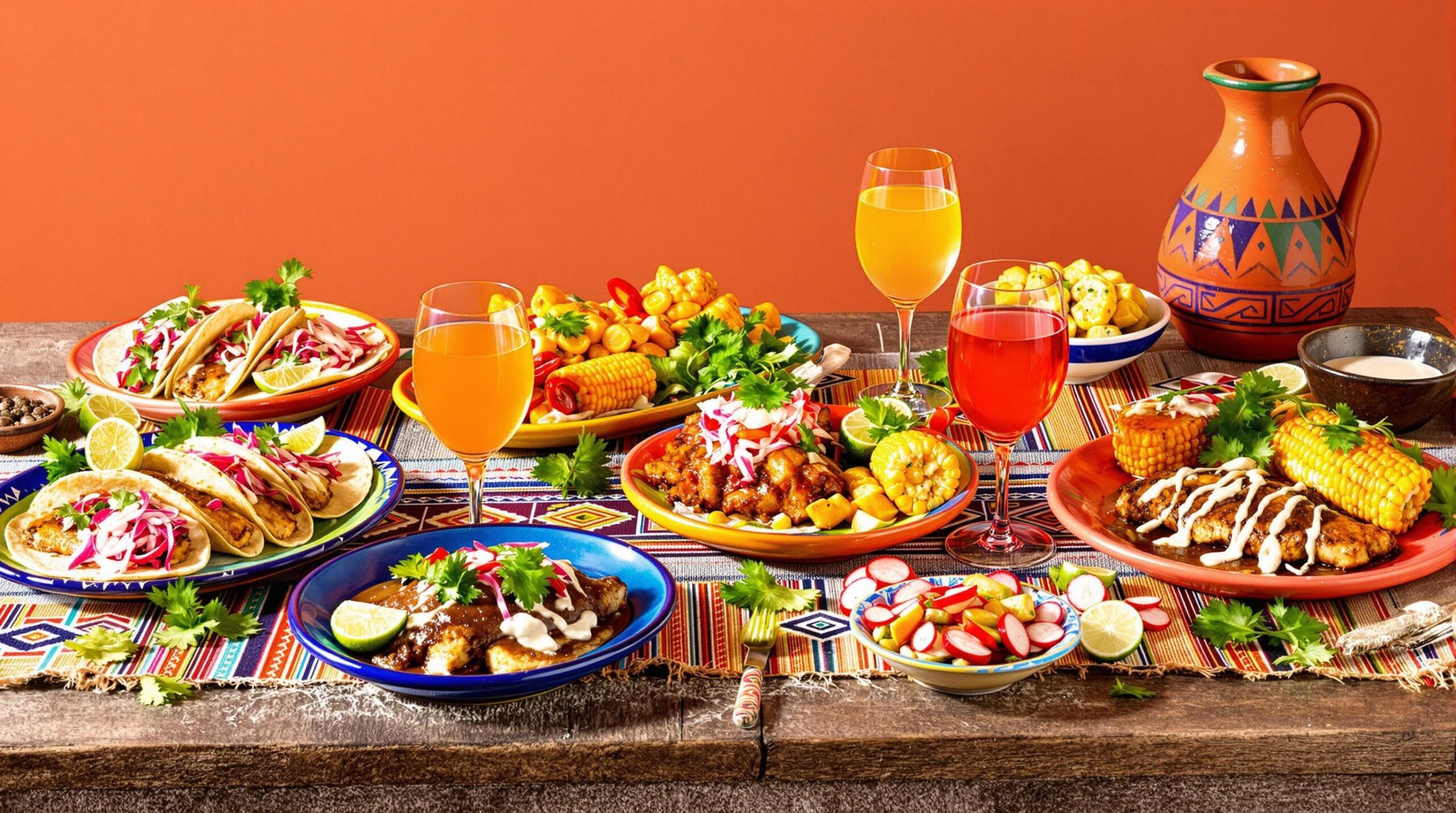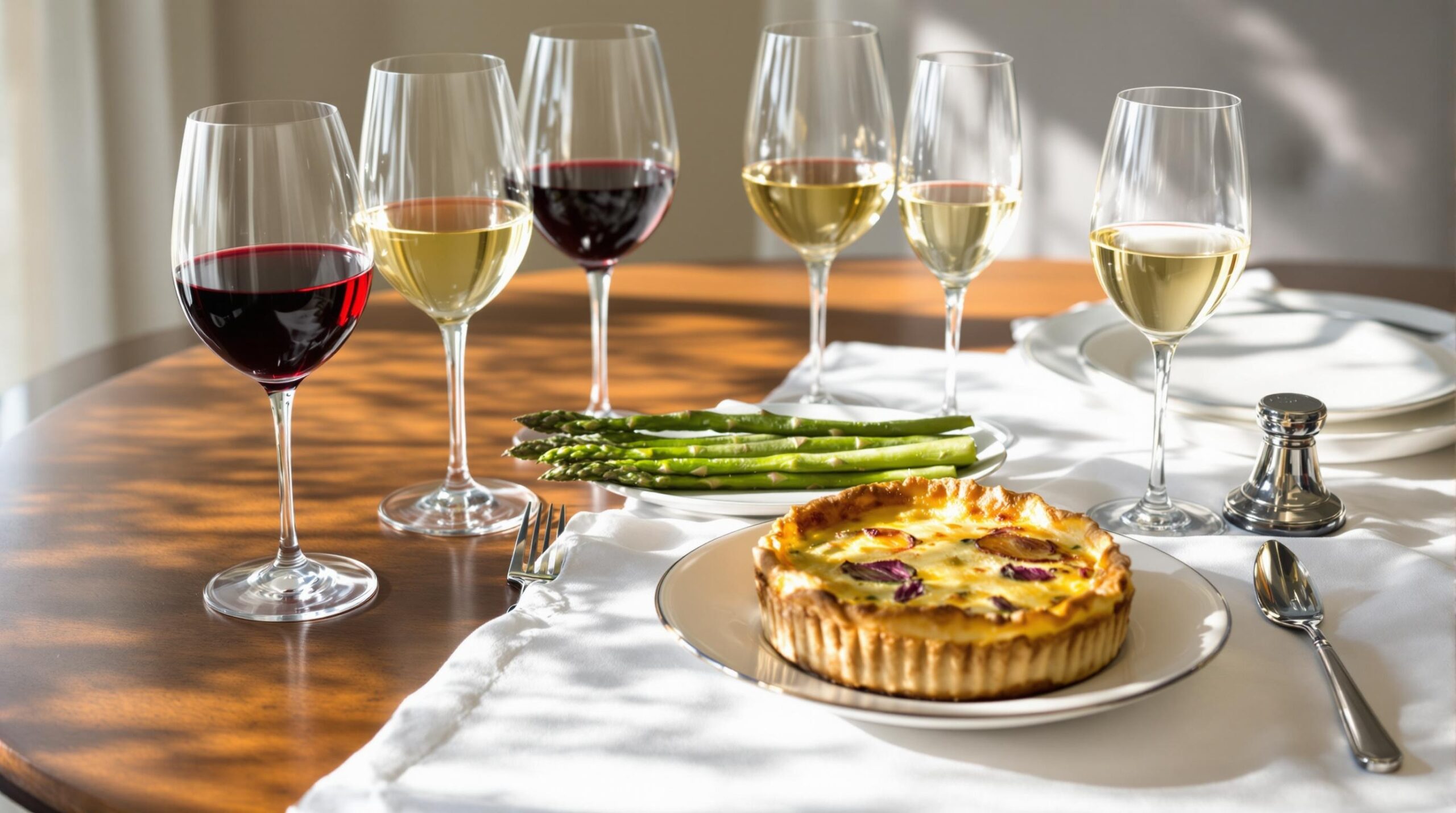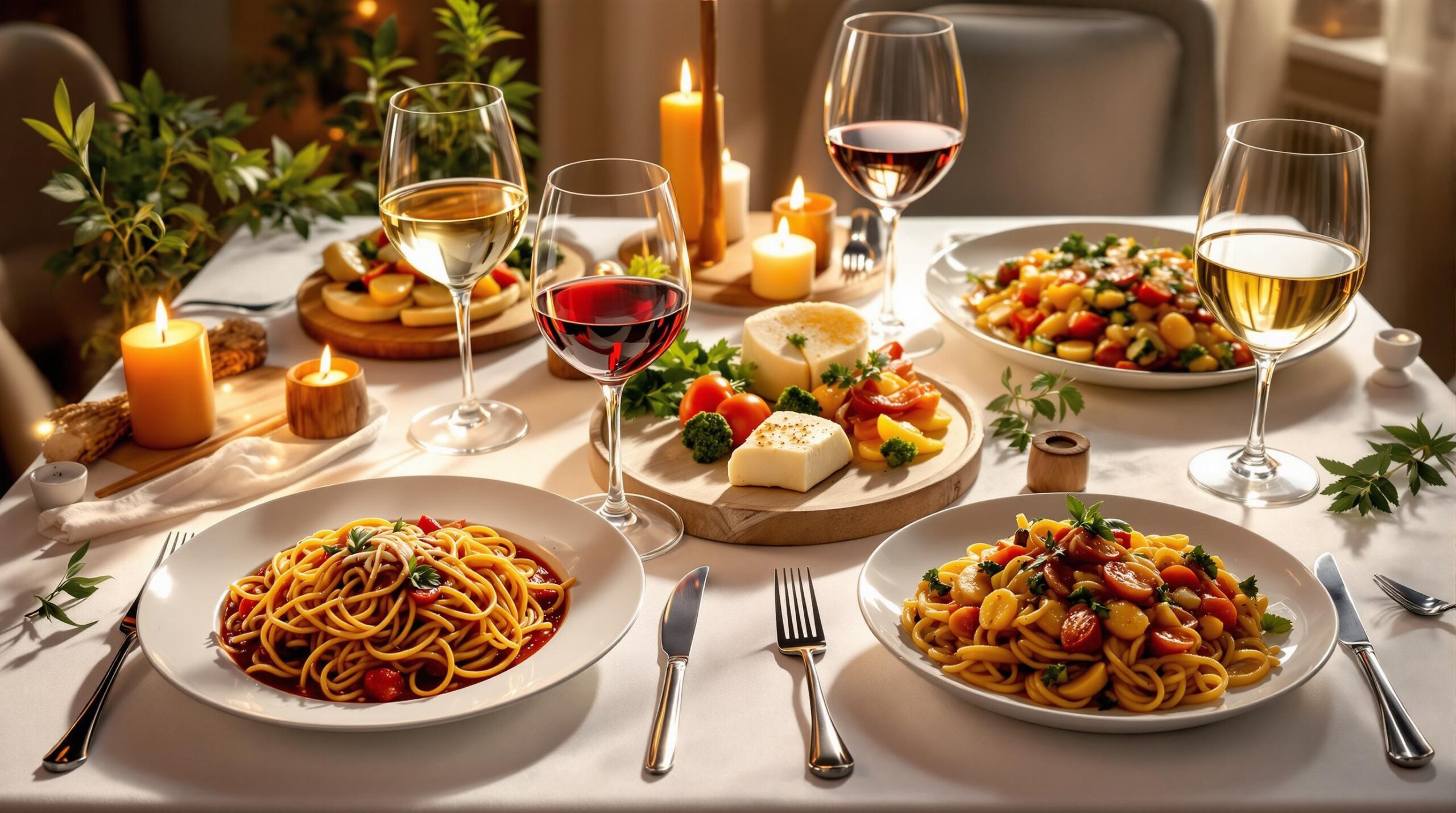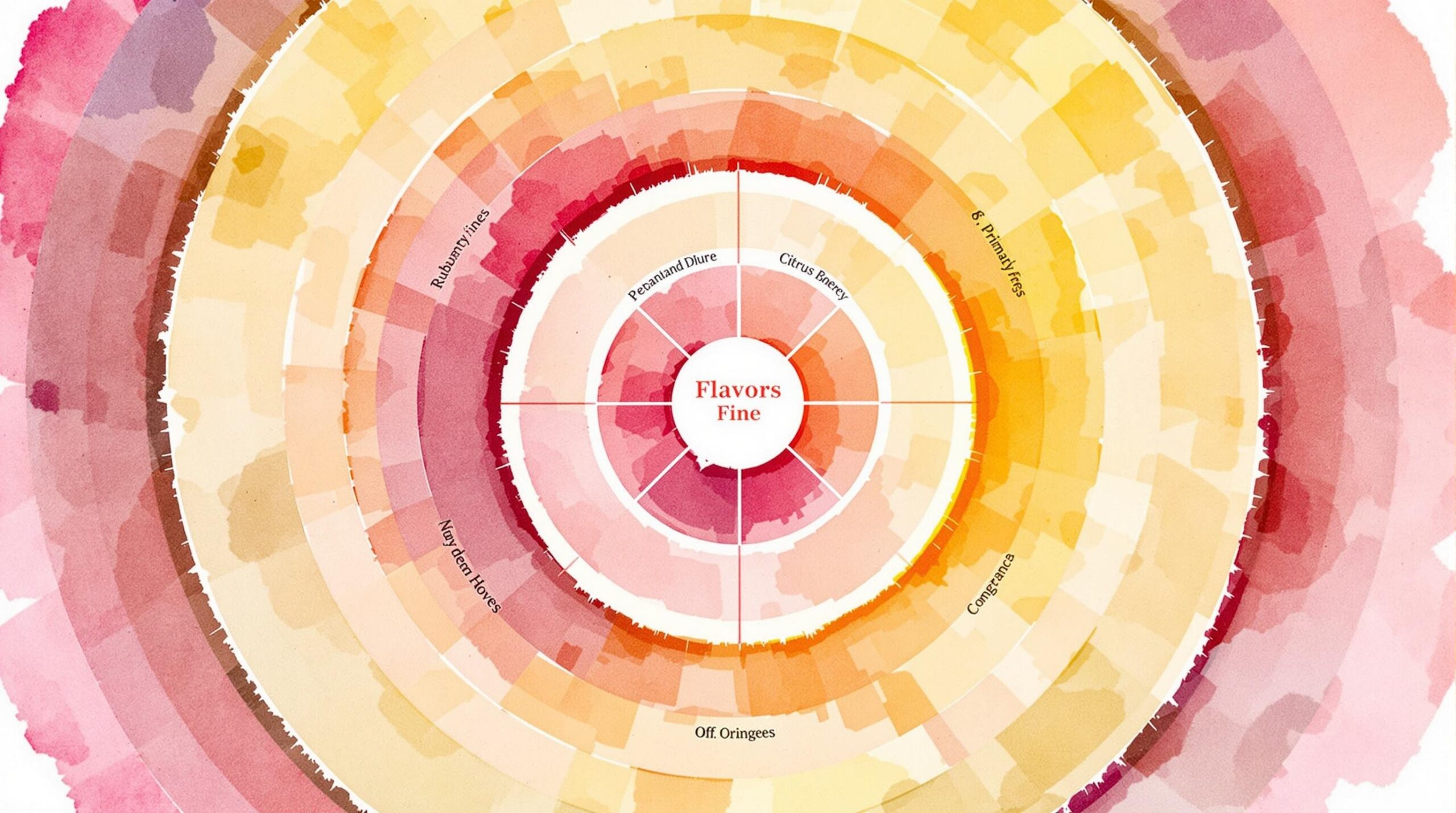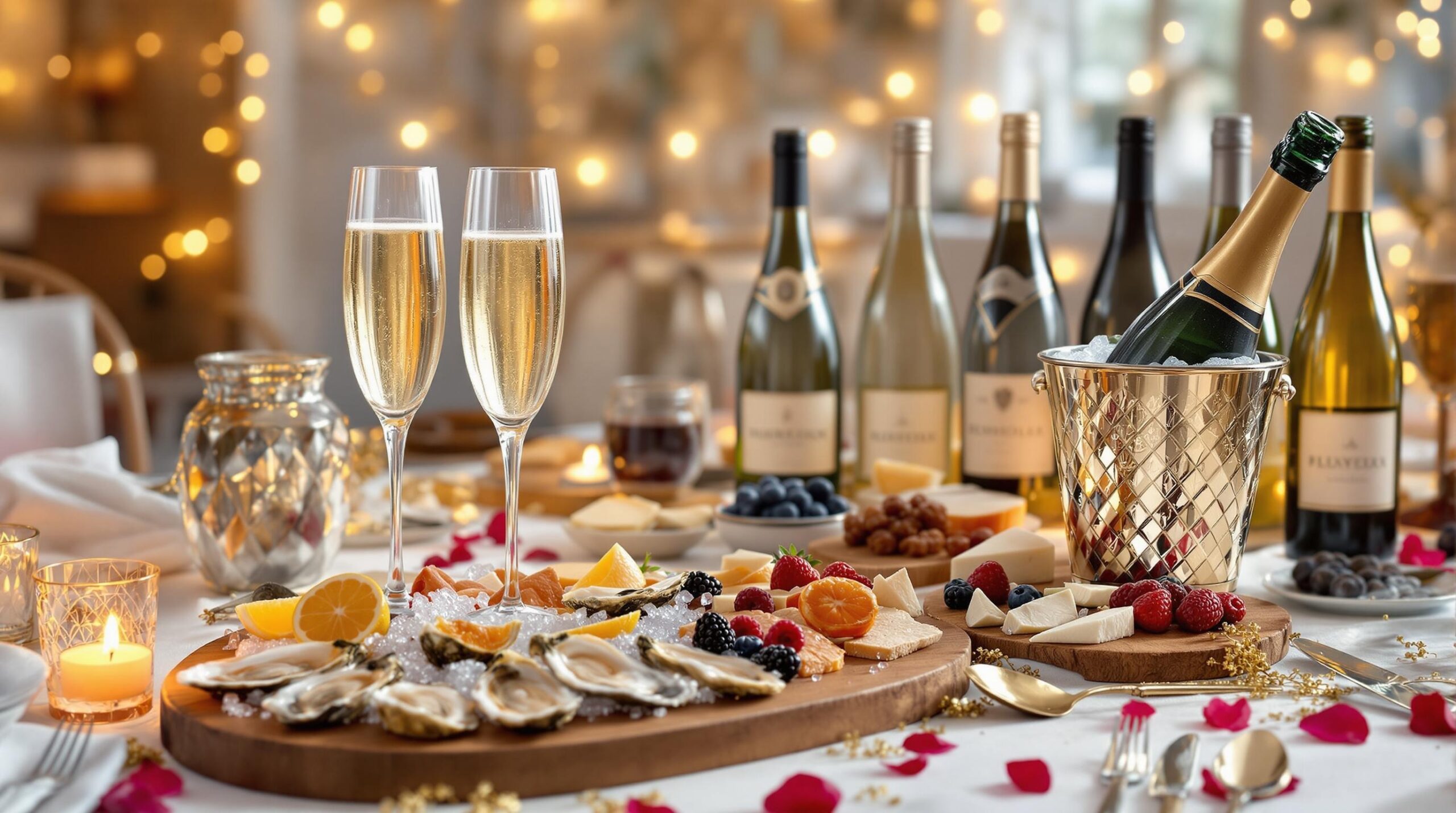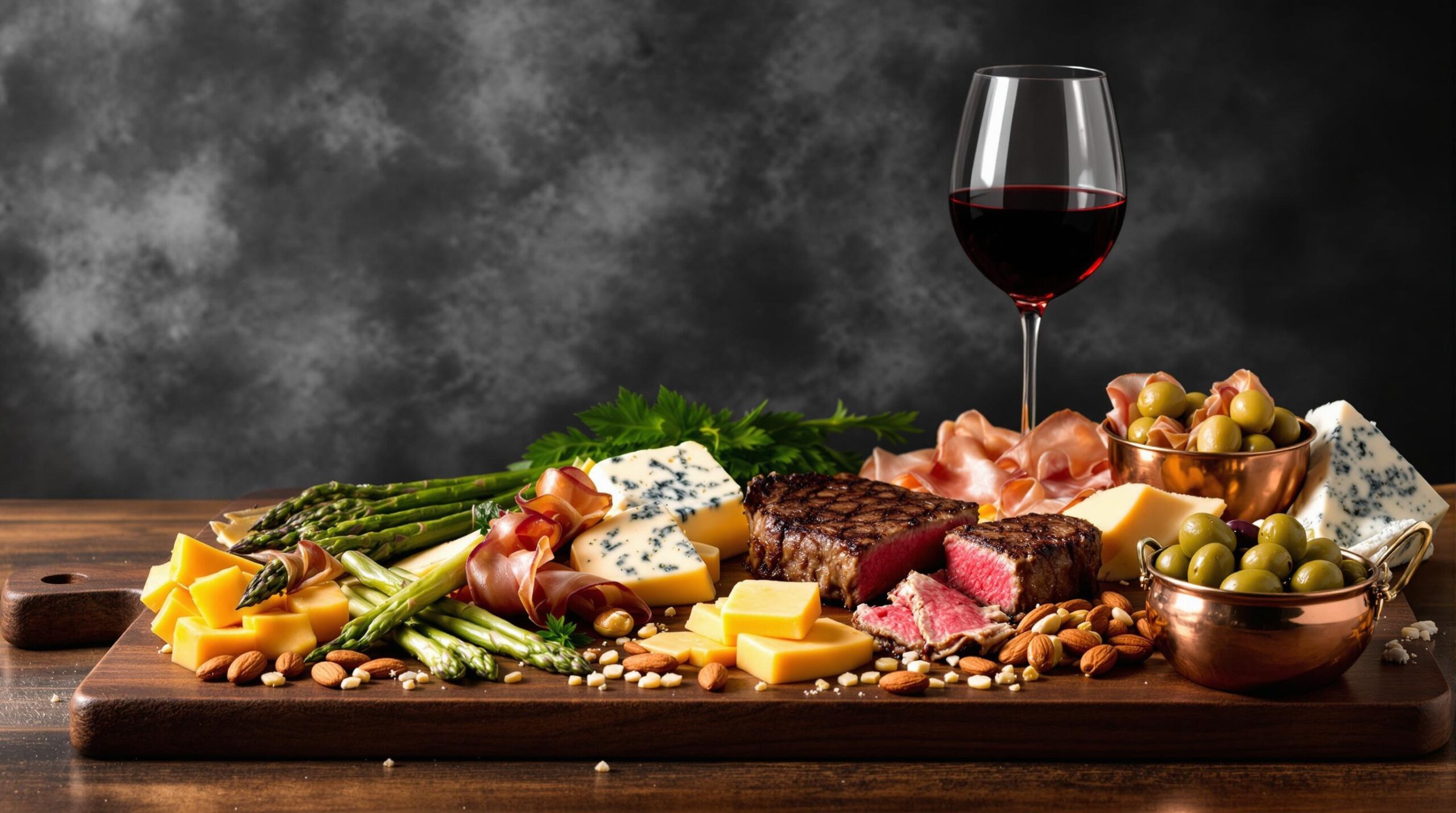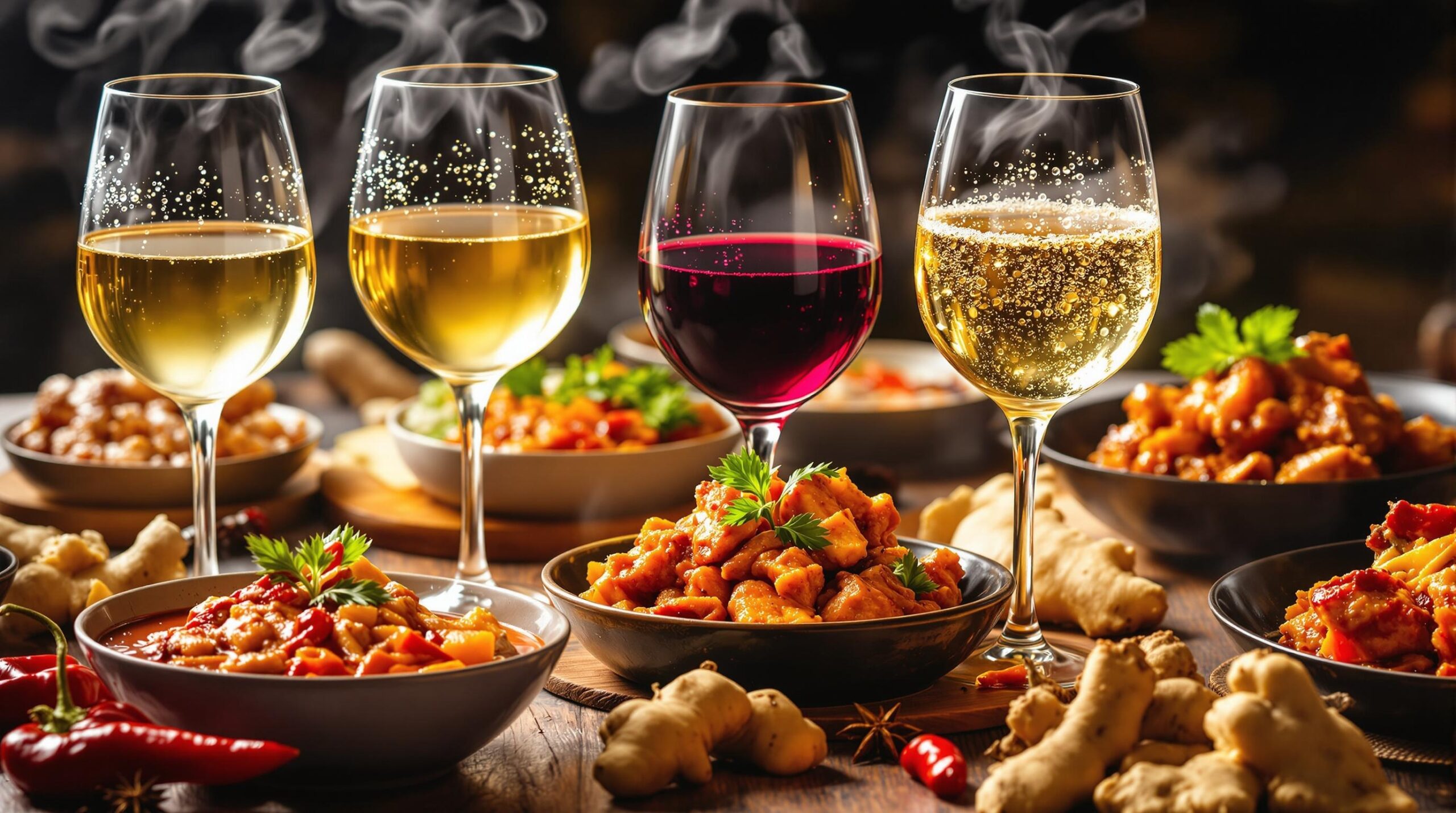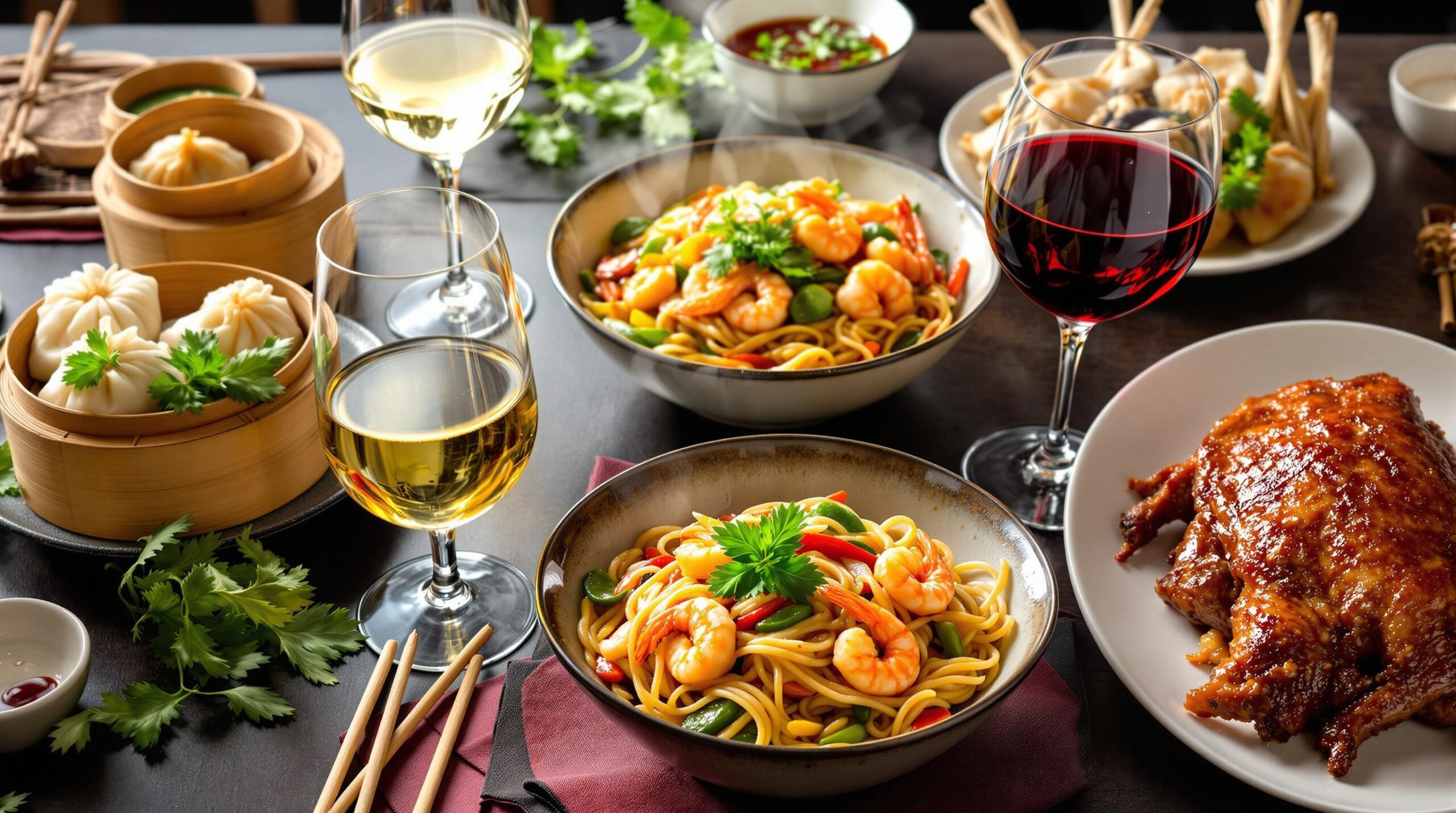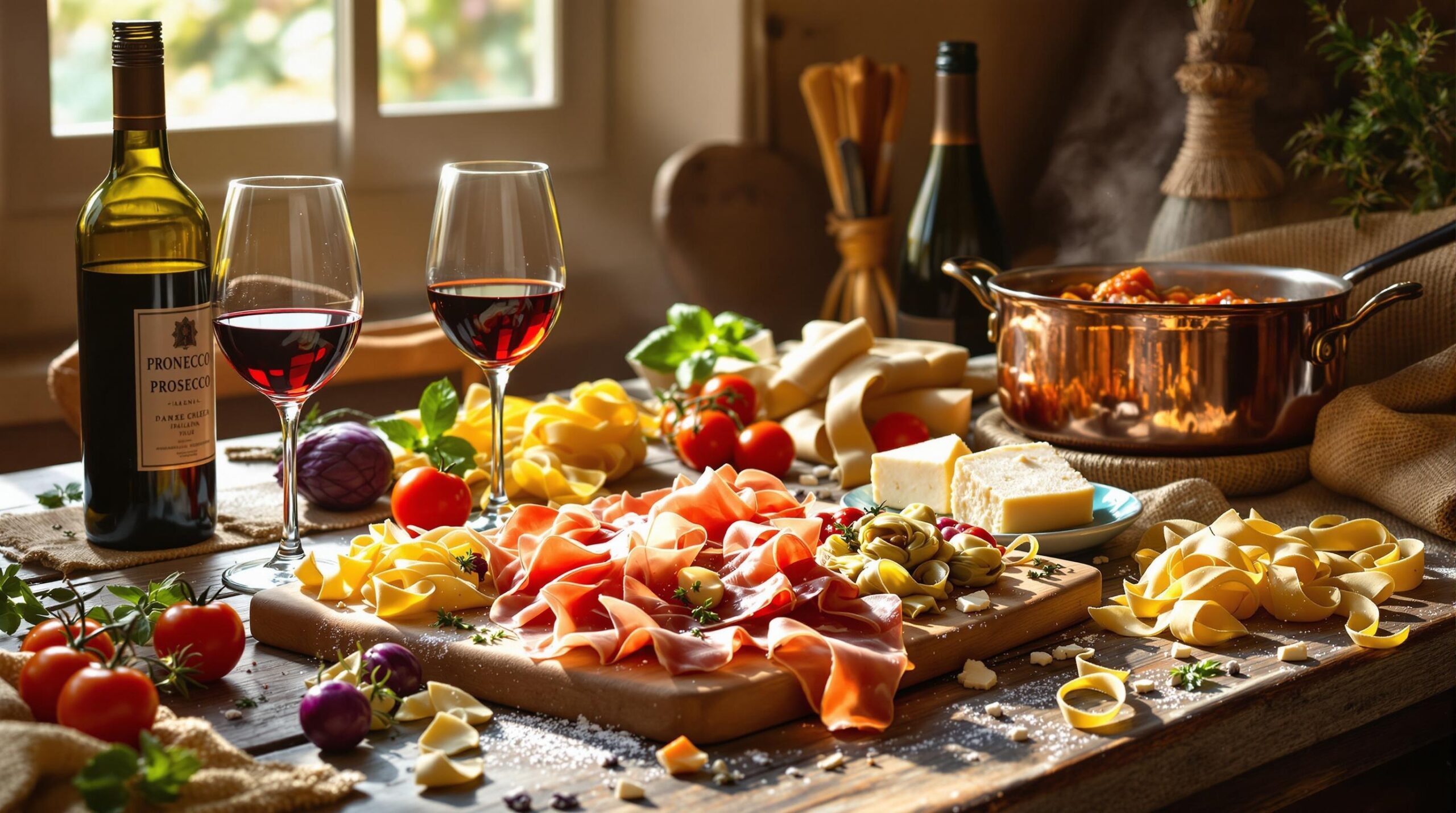Wine pairing mistakes can transform a great meal into a disappointing experience. This quick guide helps both beginners and enthusiasts avoid common pitfalls when matching food and wine.
Basic Pairing Rules That Matter Most
Weight matching stands as the foundation of successful pairing. Light foods work best with lighter wines, while rich dishes need fuller-bodied wines.
- Light foods: Pinot Grigio, Sauvignon Blanc
- Rich foods: Cabernet Sauvignon, Malbec
Consider the dominant flavor of your dish rather than just the protein.
| Flavor Profile | Wine Match |
|---|---|
| Acidic (tomato-based) | High-acid wines (Chianti, Sangiovese) |
| Creamy | Buttery whites (Chardonnay) |
Temperature and Serving Mistakes
Wine temperature affects taste significantly. Red wines served too warm can taste alcoholic and flabby.
- Red wine: Serve at 60-65°F (15-18°C)
- White wine: Serve at 45-50°F (7-10°C)
- Sparkling wine: Serve at 40-45°F (4-7°C)
Overcoming Challenging Food Pairings
Some foods pose unique pairing challenges. Artichokes, asparagus, and eggs can make wines taste metallic or bitter.
- Artichokes: Try Grüner Veltliner
- Asparagus: Pair with Sauvignon Blanc
- Eggs: Choose sparkling wines
Avoid high-tannin reds with these challenging ingredients.
Seasonal Food and Wine Adventures
Different seasons call for different wine pairings. Summer demands crisp, refreshing wines while winter welcomes robust reds.
- Summer: Rosé, Vinho Verde, Pinot Grigio
- Fall: Light to medium-bodied reds like Pinot Noir
- Winter: Full-bodied reds like Syrah, Zinfandel
- Spring: Aromatic whites like Riesling, Gewürztraminer
Budget-Friendly Wine Selection Tips
Great wine pairings don’t require expensive bottles. Many regions offer excellent value wines perfect for food pairing.
| Region | Value Wine Options |
|---|---|
| Spain | Rioja, Albariño |
| Portugal | Douro reds, Vinho Verde |
| South America | Chilean Carmenere, Argentine Malbec |
Building Your Wine Collection
Start with versatile wines that pair well with multiple dishes. Focus on food-friendly varieties that match your usual cooking style.
- Everyday whites: Sauvignon Blanc, unoaked Chardonnay
- Versatile reds: Pinot Noir, Sangiovese
- Special occasion: Champagne, aged Bordeaux
Making Wine Part of Your Culinary Journey
Wine enhances both cooking and dining experiences. Keep a cooking wine journal to track successful pairings.
- Note successful and unsuccessful combinations
- Document seasonal favorites
- Record guest preferences for future reference
- Share discoveries with friends and family
Food and Wine Pairing FAQs
1. What’s the basic rule for matching wine with food?
Match the weight and intensity of the wine with your food. Light dishes work with lighter wines, while rich foods need fuller-bodied wines.
2. Can I serve red wine with fish?
Yes, lighter reds like Pinot Noir pair well with meatier fish like salmon or tuna. The key is avoiding high-tannin reds that can create a metallic taste.
3. What wine goes with spicy food?
Choose wines with lower alcohol content and some sweetness, like Riesling or Gewürztraminer. High alcohol intensifies the heat, while sweetness helps calm it.
4. Why do some wine pairings taste awful?
Common mistakes include matching tannic wines with fish or sweet wines with salty foods. The combination can create unpleasant metallic or bitter flavors.
5. How do I pair wine with cheese?
Regional pairings often work best – Italian wines with Italian cheeses. Fresh, light cheeses pair with crisp whites, while aged cheeses match with fuller-bodied reds.
6. What’s a safe wine choice for multiple dishes?
Choose versatile wines with moderate acidity and body. Pinot Noir, Chardonnay, and sparkling wines are reliable options.
7. Should I match wine with sauce or protein?
Focus on the dominant flavor of the dish. A chicken in rich cream sauce pairs better with full-bodied whites than light whites typically matched with poultry.
8. How do dessert wines work?
The wine should be sweeter than the dessert. Otherwise, the wine can taste thin and bitter.
9. What about vegetarian dishes?
Consider the preparation method and seasonings. Grilled vegetables pair well with light to medium-bodied reds, while fresh salads match with crisp whites.
10. How do I fix a bad pairing?
Add balancing elements to your meal. A squeeze of lemon or pinch of salt can help bridge gaps between food and wine.
Quick Tips for Better Pairings
- Start with wines you enjoy
- Consider the cooking method (grilled, roasted, raw)
- Match regional foods with regional wines
- When in doubt, choose sparkling wine
- Remember: acidity in wine cuts through rich foods
Common Pairing Mistakes to Avoid
- Serving tannic reds with fish or spicy foods
- Pairing oaked whites with delicate seafood
- Matching dry wines with very sweet desserts
- Overlooking the impact of sauces and seasonings
- Focusing only on the main protein

